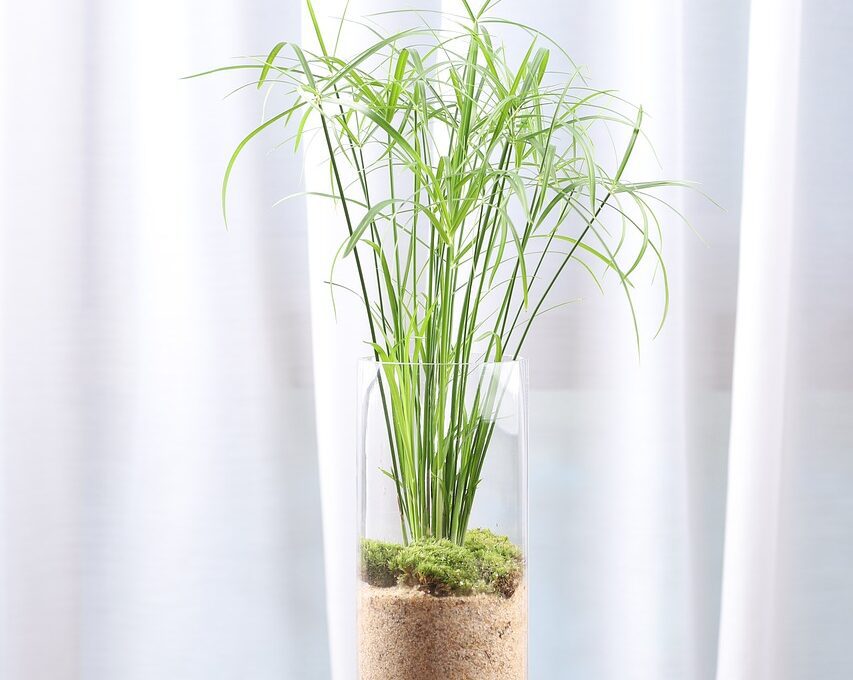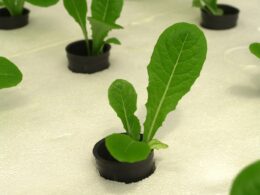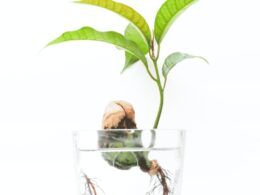If you’re looking to grow your own plants but don’t have access to outdoor space or soil, hydroponics may be the perfect solution for you. Hydroponics is a method of growing plants in nutrient-rich water, without the need for soil. This allows plants to grow faster and produce higher yields than traditional gardening methods.
But what plants should you grow in your hydroponic system? In this article, we’ll explore the three best plants to grow in hydroponics: lettuce, tomatoes, and herbs.
Lettuce is a perfect plant for hydroponics because it grows quickly and doesn’t require much space. You can harvest your lettuce in as little as four weeks, making it a great option for those who want to see results quickly.
Tomatoes are another great option for hydroponics, as they can grow to be quite large and produce a high yield of fruit.
Herbs are also a popular choice for hydroponics, as they can be grown year-round and are easy to care for.
In the following sections, we’ll discuss each of these plants in more detail, as well as provide tips for setting up and caring for your hydroponic system.
Lettuce
Lettuce is the ultimate star of hydroponic gardening! With its rapid growth rate, low maintenance requirements, and high yield, it’s no wonder that lettuce is one of the most popular plants grown in hydroponic systems.
When it comes to types of lettuce for hydroponics, there are many to choose from. Some of the most commonly grown varieties include butterhead, romaine, and loose-leaf lettuce.
When it comes to nutrient solutions for lettuce growth, there are a few key things to keep in mind. First and foremost, lettuce needs nitrogen, phosphorus, and potassium to grow strong and healthy. Additionally, it’s important to make sure that the pH of the nutrient solution is within the optimal range for lettuce growth, which is typically between 5.5 and 6.5.
Finally, it’s important to provide adequate lighting and temperature control to ensure that your lettuce plants thrive.
Overall, lettuce is an excellent choice for hydroponic gardening, and with the right care and attention, you can enjoy a bountiful harvest of fresh, healthy greens. Whether you’re a seasoned gardener or just starting out, growing lettuce in a hydroponic system is a great way to enjoy the benefits of homegrown produce without the hassle of traditional gardening methods. So why not give it a try and see what kind of results you can achieve?
Tomatoes
Tomatoes are the ultimate hydroponic crop, delivering juicy, flavorful fruit with minimal effort. To grow the best tomatoes in hydroponics, you need to master the right growing techniques and nutrient management. Here are four essential tips to help you grow the best hydroponic tomatoes:
-
Choose the right variety: Some tomato varieties are better suited for hydroponics than others. Choose a variety that’s known for its high yield and disease resistance.
-
Provide ample light: Tomatoes require a lot of light to grow and produce fruit. Make sure your hydroponic setup provides enough light for your plants to thrive.
-
Monitor nutrient levels: Tomatoes require a balanced nutrient mix to grow and produce fruit. Regularly monitor and adjust your nutrient mix to ensure your plants are getting the right nutrients.
-
Prune and train your plants: Tomatoes can become unruly if left unattended. Regularly prune and train your plants to keep them under control and maximize their yield.
By following these tips, you can grow the best hydroponic tomatoes and enjoy delicious, juicy fruit with minimal effort. With the right growing techniques and nutrient management, you can easily grow tomatoes in your hydroponic setup and enjoy a bountiful harvest of fresh, flavorful fruit.
Herbs
If you’re a fan of adding fresh herbs to your meals, you’ll love growing them in your hydroponic setup! Indoor gardening has become increasingly popular, and hydroponics is a great way to grow plants without soil.
Herbs are a perfect choice for hydroponics because they don’t require a lot of space and can be grown year-round. One of the benefits of hydroponics is that it allows you to control the environment in which your plants grow. This means you can adjust the temperature, humidity, and nutrient levels to ensure your herbs thrive.
Plus, since hydroponics uses water instead of soil, you don’t have to worry about pests or diseases that can harm your plants. Growing herbs in hydroponics also has health benefits. Fresh herbs are packed with vitamins and minerals that can boost your immune system and improve your overall health.
Having fresh herbs on hand means you can add flavor to your meals without relying on salt or other unhealthy additives. Incorporating herbs into your hydroponic setup is easy and rewarding. Whether you’re growing basil, cilantro, or parsley, you’ll love having fresh herbs at your fingertips.
Plus, with hydroponics, you can enjoy the benefits of indoor gardening without the hassle of soil. So why not give it a try and see how easy it is to grow your own herbs?
Setting up your hydroponic system
You’ll be able to set up your hydroponic system easily and quickly with these simple steps.
First, choose a suitable location for your setup. You’ll need an area with optimal lighting, preferably near a window or under artificial lighting. Make sure to avoid areas with extreme temperatures or humidity.
Next, choose the right growing medium for your plants. Some popular options include rockwool, coco coir, and perlite. Ensure that the medium is sterile and pH-neutral before use.
Additionally, water quality is crucial, so be sure to use filtered or distilled water for your nutrient solution.
Lastly, prepare your nutrient solution according to the specific needs of your plants. You can purchase pre-made nutrient solutions or create your own using individual nutrient salts. Make sure to measure the solution’s pH and adjust as needed.
Following these steps will prepare you to set up a successful hydroponic system for your plants.
Caring for your hydroponic plants
When caring for your hydroponic plants, it’s important to monitor nutrient levels and pH regularly to ensure optimal growth.
You’ll also need to keep an eye out for pests and diseases, as they can quickly spread and harm your plants.
Once your produce is ready to harvest, make sure to store it properly to maintain its freshness and quality.
Monitoring nutrient levels and pH
To ensure optimal growth conditions in your hydroponic system, it’s essential to regularly monitor nutrient levels and pH. Maintaining the correct pH balance is crucial for the plants to absorb the nutrients they need. If the pH level is too high or too low, it can cause nutrient deficiencies, stunted growth, and even plant death.
To avoid this, use a pH meter to test the water regularly and adjust it as needed. The ideal pH range for most hydroponic plants is between 5.5 and 6.5.
In addition to pH, it’s also important to monitor nutrient levels. Nutrient deficiency symptoms can include yellowing leaves, slow growth, and weak stems. Check the nutrient levels in your water regularly and adjust them as needed.
Be careful not to overfeed your plants, as this can lead to nutrient burn and damage to the roots. With proper monitoring and adjustment of pH and nutrient levels, your hydroponic plants will thrive and produce a bountiful harvest.
Pest and disease control
Dealing with pests and diseases can be a real pain in the neck, but it’s an essential part of maintaining a healthy hydroponic garden.
The good news is, there are both preventative measures and reactive responses that you can take to keep your plants safe. When it comes to preventative measures, the key is to keep your hydroponic system clean and well-maintained.
Regularly check for signs of pests or diseases, and remove any affected plant material immediately. You can also use natural remedies, like neem oil or garlic spray, to deter pests and boost your plant’s immune system.
If pests or diseases do strike, it’s important to take immediate action. You can use chemical solutions, like insecticidal soap or fungicides, to quickly and effectively eliminate the problem.
However, it’s important to use these products carefully and in accordance with the manufacturer’s instructions. Alternatively, you can try natural remedies, like introducing beneficial insects or using compost tea to boost your plant’s defenses.
Whatever approach you take, remember that the key to maintaining a healthy hydroponic garden is vigilance and quick action. By staying on top of potential problems and taking steps to prevent and mitigate them, you can ensure a bountiful and successful harvest.
Harvesting and storing your produce
Now that you’ve successfully cultivated your produce, it’s time to reap the rewards and learn how to properly harvest and store your fresh, nutrient-packed fruits and vegetables. Here are a few tips to help you maximize shelf life and preserve the nutrients of your prized hydroponic produce:
-
Proper Packaging: After harvesting your produce, it’s essential to package it in a way that preserves its freshness and quality. Use airtight containers or bags to prevent exposure to air and moisture, which can cause spoilage and nutrient loss. Label your packages with the date of harvesting to keep track of their shelf life.
-
Composting: Don’t let any of your hydroponic produce go to waste. Instead, compost any scraps or leftovers to create nutrient-rich soil for future plants. This will also help reduce the amount of waste you produce and promote sustainability in your gardening practices.
-
Maximizing Shelf Life: To extend the shelf life of your hydroponic produce, store it in a cool, dark place like a refrigerator or root cellar. Avoid exposure to direct sunlight, which can cause discoloration and deterioration. Use your produce within a week or two to ensure maximum freshness and flavor.
-
Preserving Nutrients: When cooking your hydroponic produce, try to use gentle cooking methods like steaming or sautéing to preserve its nutrient content. Avoid boiling or overcooking, which can destroy valuable vitamins and minerals. Also, consider eating your produce raw to enjoy its full nutritional benefits.
Frequently Asked Questions
What are the benefits of growing plants in a hydroponic system?
Are you tired of all the hard work and uncertainty that comes with traditional gardening? Look no further than hydroponics!
The benefits of hydroponics are plentiful, including the ability to grow plants all year round, even in harsh weather conditions. Not only that, but hydroponics allows for precise control over nutrients and water, resulting in higher yields and healthier plants.
Plus, without the need for soil, there’s no risk of soil-borne pests or diseases. Say goodbye to weeding and hello to a simpler, more efficient way of gardening.
The advantages of hydroponics over traditional gardening are clear, making it an excellent choice for anyone looking to grow plants in a safe and reliable way.
Can any type of plant be grown in a hydroponic system?
When it comes to selecting plants for your hydroponic system, it’s important to consider factors that influence growth rate and overall success. Plant selection is key, as some varieties simply do better in a hydroponic setting than others.
Factors like temperature, lighting, and nutrient levels can also impact how well your plants grow. While certain plants like lettuce and herbs tend to do well in hydroponic systems, it’s important to research specific varieties to ensure optimal growth.
Ultimately, the success of your hydroponic system will depend on careful plant selection and attention to the unique needs of your chosen varieties.
What equipment is needed to set up a hydroponic system?
To set up a hydroponic system, you’ll need a few key pieces of equipment.
First, you’ll need a container to hold the water and nutrients for your plants. This can be anything from a simple plastic bin to a more specialized hydroponic tank.
Next, you’ll need a way to circulate the water and nutrients to your plants. This can be done using a pump or by simply adding an air stone to your container.
Finally, you’ll need to maintain your system to ensure that it’s working properly. This includes regular hydroponic system maintenance and troubleshooting techniques to address any issues that may arise.
By taking good care of your hydroponic system, you can ensure that your plants will thrive and grow strong.
How often should the nutrient solution be changed in a hydroponic system?
Maintaining the nutrient solution in your hydroponic system is crucial to the success of your plants. The frequency of solution change will depend on the nutrient solution composition and the type of plants you’re growing.
Generally, it’s recommended to change the solution every two to three weeks or when the pH level becomes too acidic or alkaline. It’s important to monitor the nutrient levels regularly to ensure that your plants are getting the proper amount of nutrients they need to grow.
By regularly changing and monitoring your nutrient solution, you can ensure the health and safety of your plants, giving you peace of mind as you watch them thrive in your hydroponic system.
What are some common problems that can occur when growing plants in a hydroponic system, and how can they be prevented or resolved?
To ensure successful growth in a hydroponic system, there are a few common problems you may encounter.
One issue is algae growth, which can be prevented by regularly cleaning and sterilizing your system, ensuring there is no light penetration, and avoiding overfeeding your plants.
Maintaining the pH level of the nutrient solution is also crucial. Regularly testing and adjusting the pH can prevent nutrient lockout and ensure your plants are receiving the correct nutrients.
Root rot is another potential issue that can be managed by ensuring proper oxygenation techniques, such as using air stones or a water pump, and avoiding overwatering.
By taking these preventative measures, you can create a safe and successful hydroponic growing environment.
Conclusion
So there you have it, the three best plants to grow in hydroponics are lettuce, tomatoes, and herbs. These plants thrive in water-based systems and can produce an abundant yield with proper care and maintenance.
Setting up your hydroponic system may seem daunting at first, but with some research and patience, it can be a rewarding and efficient way to grow plants.
Remember to regularly check the pH levels and nutrient solutions to ensure optimal growing conditions. With some dedication and love, your hydroponic garden will flourish and provide fresh, healthy produce for you and your family to enjoy.









